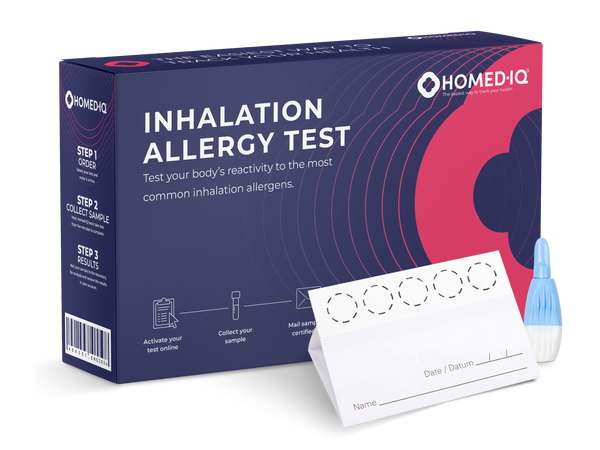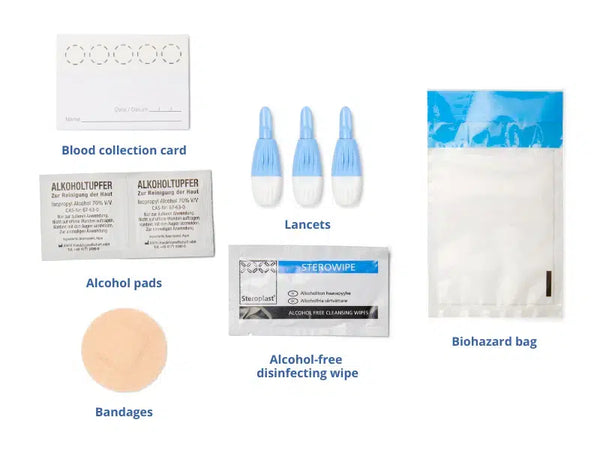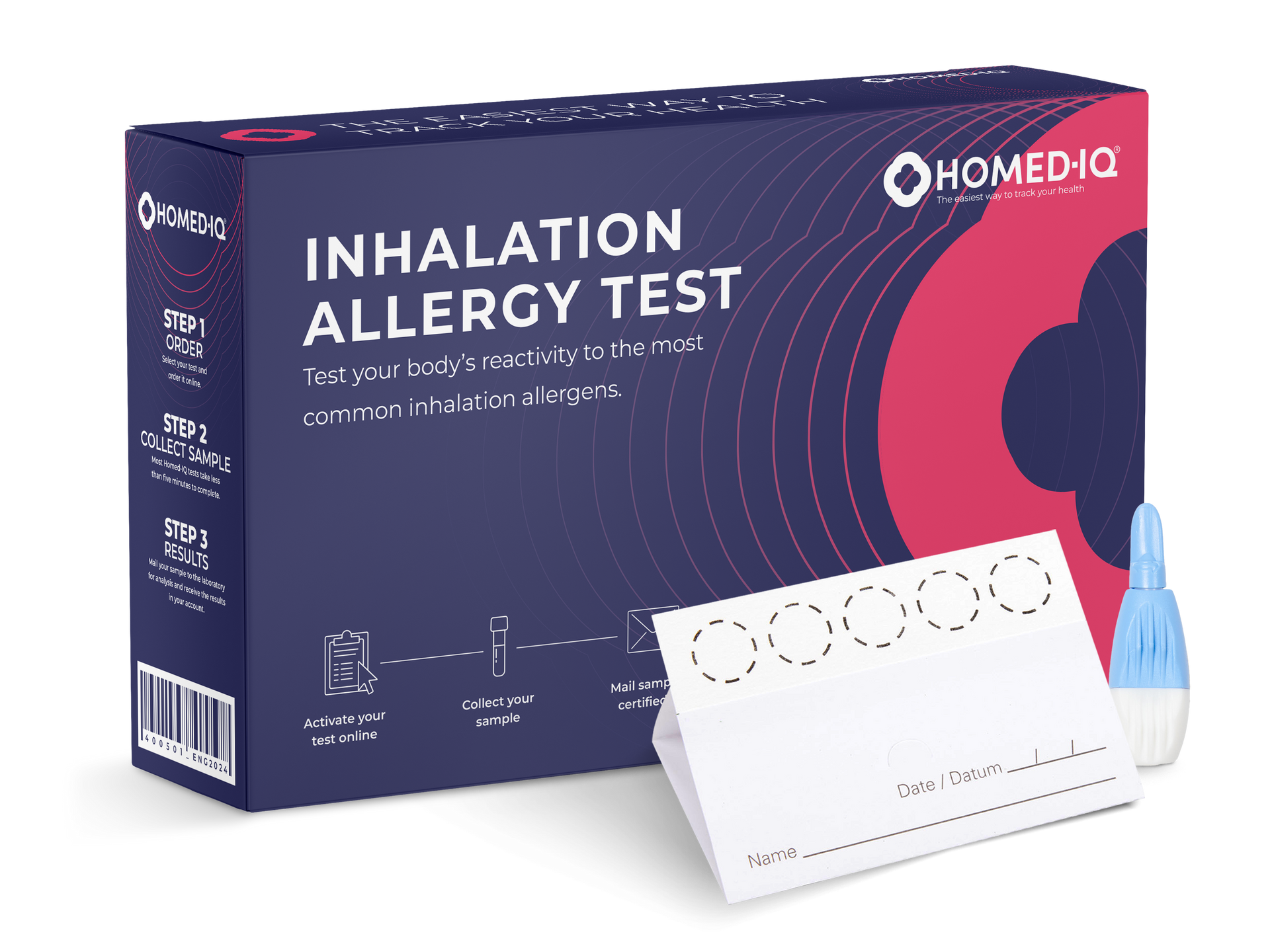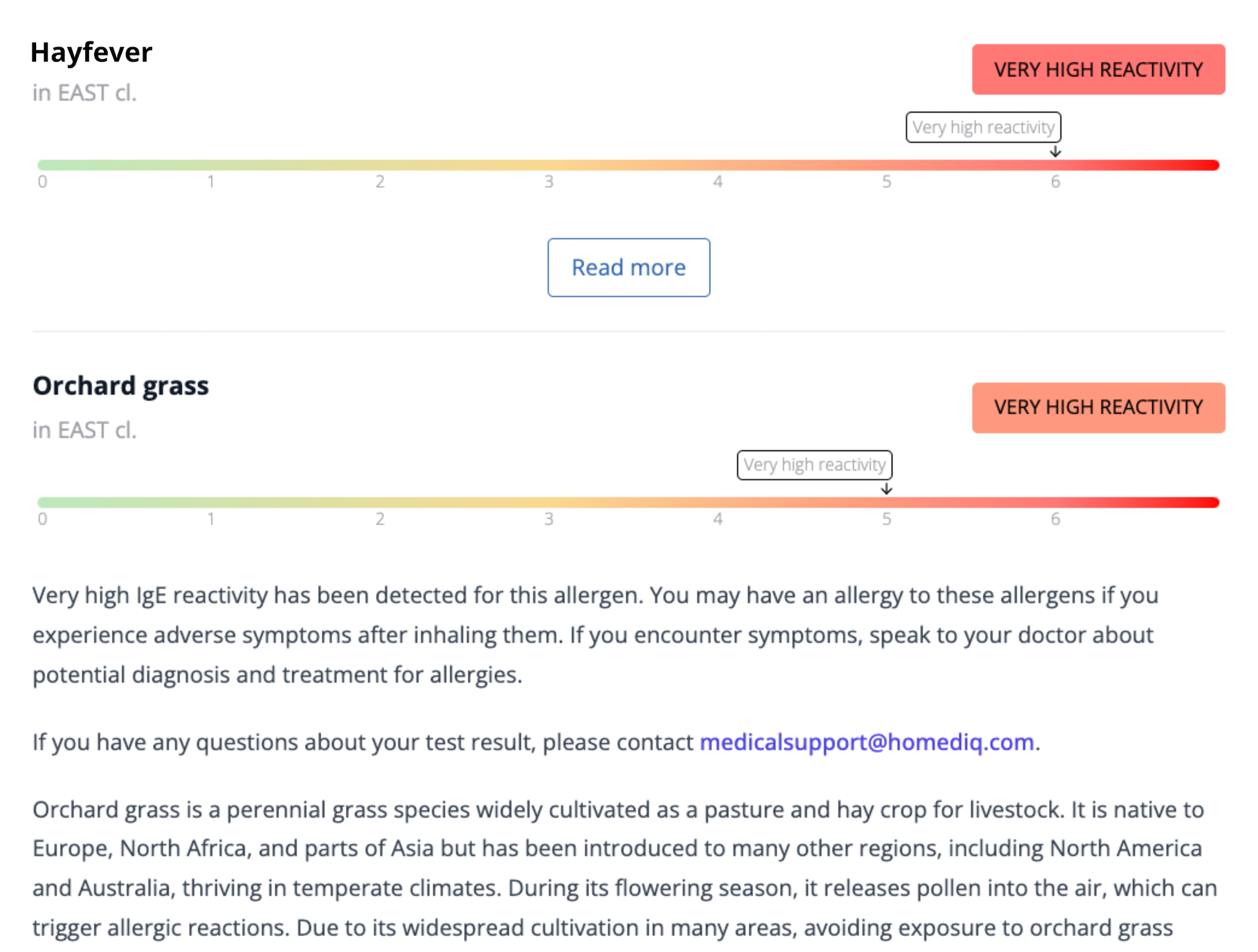Inhalation Allergy Test
FREE SHIPPING
Are you experiencing symptoms like sneezing, watery eyes, or itchy skin, but are unsure of the cause? Learn your reactivity to common inhalation allergens that may be triggering symptoms, including grasses, trees, moulds, dust, and pet allergens. Identifying specific allergens can allow you to take steps to reduce your exposure and alleviate chronic symptoms.
Test mode:
Dried blood spot test
What do we test for?
Animals, Dust Mites, Grass Pollens, Latex, Moulds, Tree Pollens, Weed Pollens
FAQs
Is this an allergy test?
What are allergies?
What causes allergies?
How long does it take to obtain my allergy test result?
Can you see an allergy in blood?
Who should take this test?
What is an allergic reaction?
How does this test compare to other types of allergy tests?
How long does it take to obtain a test result?
What is hay fever?
What is the difference between hay fever and allergies?
How can I avoid hayfever?
Do I need to stop taking allergy medication before using this allergy test?
How does it work?
-
![Woman in professional cozy kitchen with Homed-IQ test kit]() 1
1Order your test
Fast and discrete letterbox delivery
-
![]() 2
2Activate & take your sample
Video instructions included
-
![]() 3
3Laboratory analysis
ISO - Certified lab network
-
![]() 4
4Receive your results
Easy access through mobile









